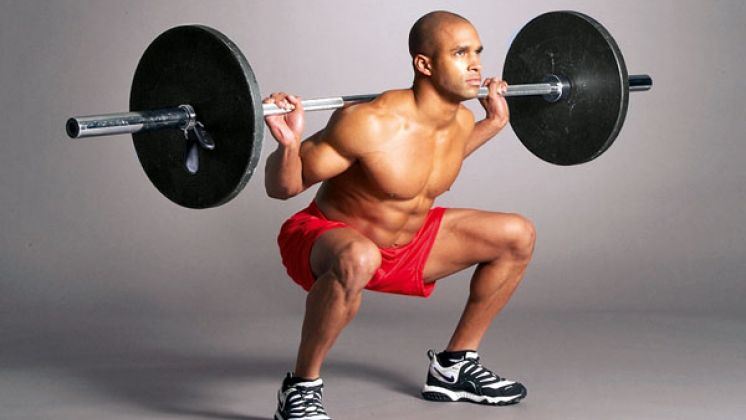Anatomy of the perfect squat
Experts analysed years of research to come up with the perfect form for this classic move

Depth of movement
'People tend to believe going deeper increases muscle activation, but once you go past 90˚ there's no significant increase,' says Peter Kasim, co-author of the squat technique report in the Strength And Conditioning Journal. 'The only people to benefit from going deeper would be elite athletes who need that extra push.'
Head position
'Keep your head facing forwards and your eyes looking up,' says Kasim. 'That allows you to maintain good posture and avoid flexing forwards, which puts stress on your lower back.'
Knees and toes
'The general belief is that your knees shouldn't pass over your toe line,' says Kasim. '[Keeping the knee behind the toes] reduces the strain on the knee joint but it also increases the load on the lumbar spine. As long as you can keep your heels on the floor, your knees can move a couple of inches over the toes to even out the strain.'
Foot width
'Widening or narrowing your stance doesn't really affect which muscles are recruited,' says Kasim. 'The ideal position is one that's comfortable for the individual, which is usually around shoulder width.'
Foot position
'Turning your feet excessively outwards increases the load on the knee joint, which increases your risk of injury,' says Kasim. 'The same goes for turning your feet in, so keep them neutral.'
Get the Coach Newsletter
Sign up for workout ideas, training advice, reviews of the latest gear and more.
Coach is a health and fitness title. This byline is used for posting sponsored content, book extracts and the like. It is also used as a placeholder for articles published a long time ago when the original author is unclear. You can find out more about this publication and find the contact details of the editorial team on the About Us page.

